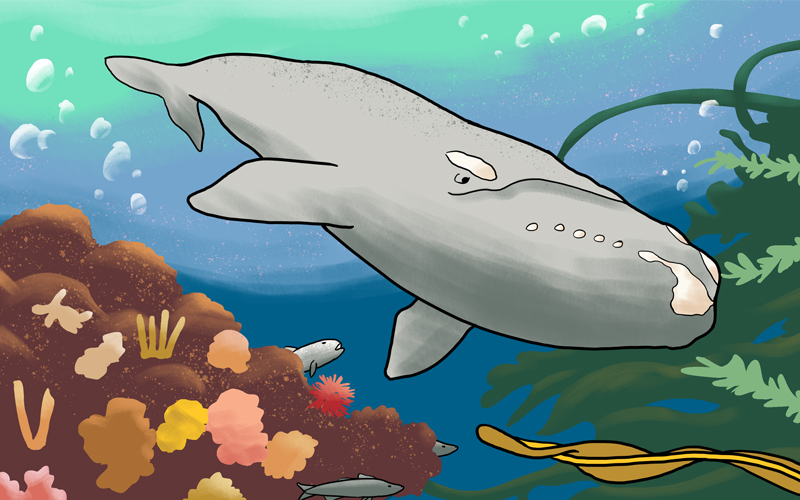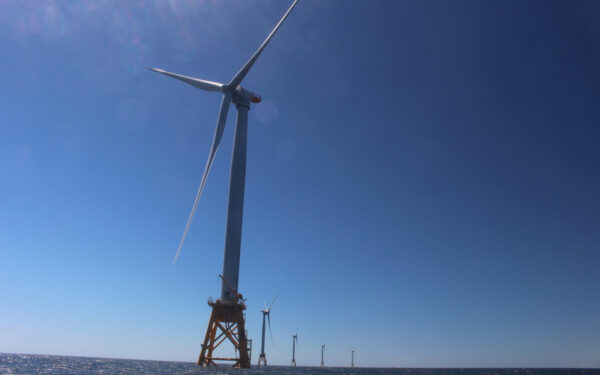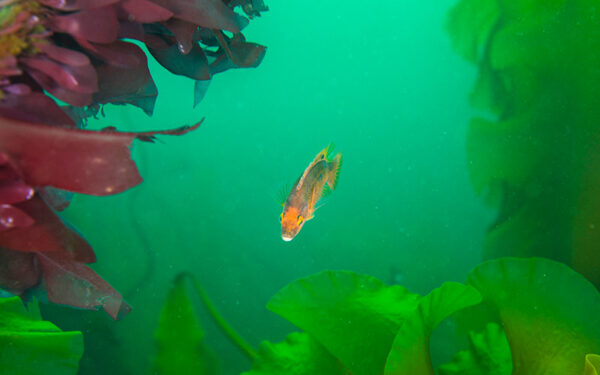
North Atlantic right whales are fascinating, majestic creatures. Get to know some remarkable facts about this critically endangered species. Illustration: Josh Kramer
1. North Atlantic Right Whales Can Live Long Lives
Right whales can and should live for up to 75 years. But that number is quickly declining. Scientists identify individual right whales through photographs and compare these images throughout time to learn about their lifespan. And, according to recent estimates, female right whales are barely making it to middle age.
But many right whales don’t even make it that far. In 2022, a two-month-old calf was accidentally struck and killed by a small boat. That’s why we are pushing federal regulators to set stricter speed regulations in areas where whales congregate.
2. Right Whales Have a Thick Layer of Blubber
Right whales’ blubber can be as thick as 12 inches. This dense layer of fat keeps whales well-nurtured, protects them from the cold, and gives them the energy needed to travel for hundreds of miles.
Blubber also gives whales buoyancy – it helps them stay afloat with ease.
But blubber doesn’t cover all their body parts. Whales’ flippers and flukes have no blubber. Instead, these body parts help them cool down by releasing excess heat.
3. They Have No Teeth
Instead, they have something called baleen.
Baleen is made of keratin – the same protein that makes up human hair. And though, from afar, the baleen in their mouths looks like an antique hairbrush, only the fringes have actual hairs. The rest of their baleen is strong but flexible. In fact, hunters would refer to baleen as whalebone, and it was a popular material to make springs, toys, and even corsets.
Through their baleen – which works like a sieve – right whales strain ocean water to feed on tiny organisms called copepods.
4. Right Whales Eat A Lot
It’s not easy living in the cold ocean waters of the Atlantic. To maintain a healthy layer of blubber, North Atlantic right whales must consume more than 2,200 pounds of copepods every day. That’s as much as the weight of a Volkswagen Beetle.
Imagine the work it takes to consume that amount of food in microscopic organisms (one to two millimeters long).
5. Right Whales Help Fight the Climate Crisis
Beyond eating a lot, whales also produce lots of plumes (a gassy form of underwater poop). These plumes fertilize the ocean and help feed small organisms called phytoplankton. These organisms, in turn, produce 50% of the world’s oxygen – every other breath we take.
Over their lifetimes, right whales also accumulate tons of carbon in their bodies – helping to mitigate climate change. We cannot overstate the importance of whales for the ecosystem.
We are lucky to have this unsung climate champion roaming our ocean.
6. Right Whales Can Vocalize
North Atlantic right whales can make a variety of sounds such as whoops, screams, and groans. But these vocalizations are not random. Whales use these unique sounds to communicate with each other.
For example, a short ascending “whoop” serves as a contact call to bring other whales together. And male right whales can also make a gunshot-like sound. Scientists suspect that the males use this sound to attract females, assert dominance over other males, or a combination of both.
7. The Plight of the Right Whale Isn’t New
Before the 17th century, as many as 20,000 of these creatures roamed the North Atlantic Ocean. Sadly, for centuries, whalers hunted them to produce oil with their blubber – which decimated the population.
In 1935, the League of Nations officially ended right whale hunting. And, in 1973, right whales appeared on the very first “endangered” species list.
But new threats have emerged. Today, right whales still have a long way to go for recovery.
8. Right Whales Are Slow Swimmers
Don’t expect to see right whales at the animal Olympics. Researchers recorded the speed of 109 North Atlantic right whales by observing them in their calving grounds. Most of them seemed to prefer a calm pace with an average speed of just 1 mile per hour (0.7 knots).
But even at top speed, right whales can only reach 3.4 miles per hour (2.9 knots). Sadly, this makes it difficult for them to dodge threats such as accidental strikes with vessels (boats and ships).
9. They Have Beauty Marks
Around their heads, right whales have white callosities – a rare feature that gives them their iconic look.
Each whale has a unique pattern of callosities that scientists use to identify them and track them over the years. Often, whales even get named after their callosities – that’s how Snow Cone, Popcorn, and Cottontail got their names.
10. Right Whales Like to Hang Out in Groups
North Atlantic right whales enjoy hanging out in groups called SAGs (Surface Active Groups).
Commonly, these groups are made up of one female and a number of males competing to mate with her. But scientists have found that these groups may have other functions besides mating.
Researchers have documented groups with all males, all females, and even all calves. The findings suggest that right whales may also hang out in these groups to play, bond with each other, or simply assert their dominance.
Bonus Fact: The Status of Right Whales Recently Changed from Endangered to “Critically Endangered”
In 2017, 17 right whales were confirmed dead in the U.S. and Canada – an unusually high and heartbreaking number. Since then, at least 17 more whales have died, and another 15 are suspected to be dead – and all of their deaths were preventable.
Even more alarming, scientists believe that for every right whale death we see, we don’t find out about at least two more.
The situation of North Atlantic right whale is so dire that in 2020, the International Union for Conservation of Nature moved right whales from endangered status to “critically endangered.” That’s why CLF and our partners continue to fight to force regulators to create regulations that protect the present and future of this iconic species. Join us in calling for NOAA to implement new rules that would protect right whales from being struck by boats and ships.




